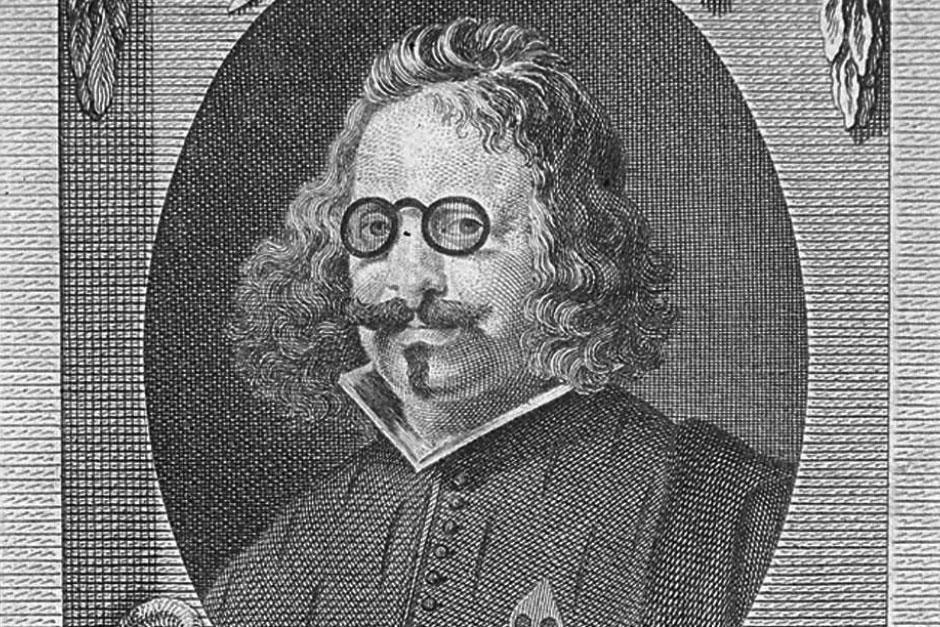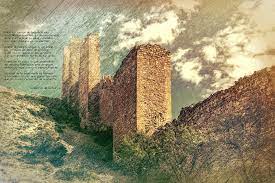3.2 Salmo XVII, “Miré los muros de la patria mía" – Francisco de Quevedo
8 min read•june 18, 2024
Sylvia Rodriguez
A
Alejandra Ramos
AP Spanish Literature 💃🏽
24 resourcesSee Units
One of the most well-known Spanish poets of the Golden Age, Francisco de Quevedo, wrote a poem titled "Salmo XVII, "Miré los muros de la patria ma," which explores the themes of exile and longing for one's home country.
Context Behind “Miré los muros de la patria mía”
Author Background
During the 17th century, Francisco de Quevedo was a well-known poet and writer in Spain. Quevedo was a significant player in the Spanish Baroque literary movement and is renowned for his intricate and sophisticated style. He is regarded as one of the best poets in Spanish literature and his writings frequently probed issues of human nature, morality, and societal criticism.

Image Courtesy of Real Academia de La Historia
Time and Place
📜Historical: The poem was created in Spain during the Spanish Golden Age, which spanned the 16th and 17th centuries and saw a flourishing of the arts and literature. Conflicts over politics and religion, economic growth, exploration, and the emergence of the Spanish Empire as a major world force all occurred during this period.
🗺️Geographic: The poem's geographical setting is Spain, and it particularly mentions "los muros de la patria mia" (the walls of my motherland). The mention of walls relates to the actual and figurative barriers that divide the speaker from their hometown, evoking longing and nostalgia for the well-known surroundings and sceneries.
Societal Context
👑Political: The poem's political setting is characterized by the decline of the Spanish Empire, along with political unrest and power struggles in both Spain and abroad. The poem captures the speaker's own experience of exile and alienation from their native country, which may have been impacted by political events or wars.
🧑🏽🤝🧑🏻Socio-economic: Social inequality and differences in income and power define the socioeconomic setting of the poem. As a member of the nobility, Quevedo frequently critiqued the excessive materialism and greed of the affluent classes in his writings while addressing the moral decay and social inequities that were pervasive in Spanish society.
🎭Cultural: The Spanish Baroque period, which is recognized for its complex and extravagant artistic style, had a significant impact on the cultural environment of the poem. Intricate wordplay, complex metaphors, and a preoccupation with the exploration of the human mind and the transient aspect of existence were characteristics of baroque art and literature. This cultural setting is reflected in Quevedo's poetry through its vivid imagery and reflective mood.
Need to Know About “Miré los muros de la patria mía”
Characters
The speaker might be viewed as a representation of the poet's voice and experience. The character's backdrop is one of desire, exile, and yearning for the homeland, representing the psychological and emotional effects of being cut off from one's roots and accustomed environment. The voice of the character reflects the content of the poem by expressing a profound sense of loss, nostalgia, and a longing to be reunited with one's home.
Literary Terms and Devices
Some literary terms and devices you should be familiar with for this poem are:
- Rima consonante: To increase the musicality of the verses, the poetry "Salmo XVII" makes use of rima consonante, or consonant rhyme, by repeating identical consonant sounds at the ends of several lines.
- Cuarteto: The poem is written in a cuarteto (quatrain) form, with each stanza having four lines. This style enables the poet to arrange their thoughts and ideas into a manageable framework, with each quatrain giving a finished notion or image.
- Terceto: Although the poem's primary form is a cuarteto, it also uses tercetos (tercets), which are composed of three lines. These tercets might be used as a contrasting or unifying element in the poem, adding to its overall rhythm and structure.
- Endecasílabo: To keep a steady meter and rhythm, "Salmo XVII" uses endecasílabos (lines with eleven syllables) throughout the poem. The poem's melody and consistent language flow are both enhanced by the usage of endecasilabos.
- Metáfora (Metaphor): The poetry uses metaphors to produce strong imagery and convey deeper meanings. They give the poet the chance to contrast or equate many ideas or things, which helps the reader understand the poem better and gives the text additional layers of symbolism.
- Enumeración (Enumeration): This is used to convey a sense of plenty, vividness, and detail, the poet employs the enumeration (listing) technique to list or enumerate various things. The enumeration technique enhances the descriptions' richness and complexity, further immersing the reader in the poetry.
- Símbolo: The poetry makes use of symbols, things, or ideas that have deeper significance beyond their literal interpretation. These symbols enhance the poem's main topic and meaning by evoking feelings, expressing abstract notions, or symbolizing universal principles.
- Hipérbaton: The poem employs the hipérbaton (word order inversion) to produce poetic effects by changing the standard syntax for emphasis or rhythm. By changing the word order, the poet gives the lines more diversity and melody, boosting the poem's overall aesthetic appeal.
Summary of “Miré los muros de la patria mía”

Image Courtesy of Flickr
Salmo XVII, also known as "Miré los muros de la patria mía," is a highly complex and multi-layered sonnet written by Francisco de Quevedo in the 17th century. The poem reflects the author's sense of alienation and despair towards Spanish society and the political and social turmoil of his time.
The poem begins with the speaker describing his surroundings, specifically the walls and barriers that surround him. The speaker feels trapped and confined within these walls, which are symbolic of the divisions and obstacles that separate people from each other and from their own sense of identity and purpose. The walls also represent the political and social barriers that prevent the speaker from achieving his goals and aspirations.
The speaker then laments the state of his country and the corruption and decadence that he sees around him. He expresses his disillusionment with Spanish society and his sense of alienation from its values and ideals. The speaker's tone is one of despair and hopelessness, as he feels powerless to effect any meaningful change in his society.
In the final lines of the sonnet, the speaker turns to God for refuge and salvation. He seeks divine intervention to overcome the chaos and destruction of the world around him. The poem ends on a note of spiritual hope, with the speaker placing his faith in God's mercy and love.
Overall, Salmo XVII is a powerful reflection of Quevedo's sense of disillusionment and despair toward Spanish society. The poem uses rich imagery and symbolism to convey the complexity of the speaker's emotions and thoughts. The themes of alienation, despair, and hopelessness are balanced by the speaker's faith in God and his hope for a better future.
Themes in “Miré los muros de la patria mía”
El tiempo y el espacio
Through the speaker's musings on the passage of time and the effect of distance on their relationship to their birthplace, the poem's theme of time and space—or el tiempo y el espacio—is explored. In order to emphasize the distance caused by both time and physical place, the speaker thinks about the barriers that separate them from their history.
El carpe diem y el memento mori
As the speaker considers how brief life is and how certain death is, the themes of el carpe diem (seize the day) and el memento mori (remember death) are prominent throughout the poem. The poem is a reminder to appreciate the present and make the most of one's life before time passes and death becomes a certainty.
La trayectoria y la transformación
As the speaker considers their own journey and the changes they have gone through throughout time, the themes of trajectory and transformation become clear. The poem examines how experiences in life change and mold one's viewpoint, highlighting the transformational force of time and the course of one's life.
La introspección
The speaker of the poem engages in extensive introspection and self-reflection, which is key to the poem's concept of la introspección (introspection). The speaker explores the inner workings of their thoughts and emotions as they reflect on their relationship with their hometown, their own identity, and the passing of time.
Analysis and Significance of Salmo XVII
Salmo XVII is a highly complex and multi-layered poem that explores themes of disillusionment, despair, and hopelessness. The poem is written in a highly elaborate and ornate style, with rich imagery and symbolism that reflects the complexity of the speaker's emotions and thoughts. The walls and barriers that the speaker describes in the poem are symbolic of the divisions and obstacles that separate people from each other and from their own sense of identity and purpose. The poem also contains religious themes, with the speaker seeking refuge and salvation from God in the face of the chaos and destruction of the world around him.
The poet Francisco de Quevedo engages in serious introspection as he considers the passage of time, the effect of distance, and the passing essence of life in "Salmo XVII, "Miré los muros de la patria ma." As Quevedo considers the barriers separating him from his native country and the melancholy that comes with the physical and temporal distance, the idea of time and space is beautifully intertwined into the poem. The poet underlines the necessity of appreciating the present moment while understanding the inevitable nature of mortality by contrasting el carpe diem and el memento mori. Highlighting la trayectoria and la transformación, Quevedo's introspective voyage causes him to reflect on the course of his life and the transformative force of time.
The importance of "Salmo XVII" is found in its examination of significant existential concerns and the speaker's voyage of introspection. The poem captures the universal human emotion of longing for one's country, pondering mortality, and considering the transformational effect of personal journeys through rich imagery, introspection, and reflection on the passage of time and distance. "Salmo XVII" by Quevedo is a timeless work that inspires readers to consider their own relationship with time, space, and the intrinsic temporality of human existence. It does this by displaying Quevedo's excellent artistry and profound reflection. It serves as a moving reminder to appreciate the present, welcome change, and reflect on the bigger picture of life and the human condition.
Study Questions
While you study and engage yourself in this poem, think about how you would answer the following questions:
- What is the role of religion in Salmo XVII?
- How does the poem reflect Quevedo's sense of disillusionment and despair with Spanish society?
- What does this reflect in regard to the historical context?
Great work! ✨
Browse Study Guides By Unit
🏇Unit 1 – La época medieval
🛳Unit 2 – El siglo XVI
🖌Unit 3 – El siglo XVII
🎨Unit 4 – La literatura romántica, realista y naturalista
🤺Unit 5 – La Generación del 98 y el Modernismo
🎭Unit 6 – Teatro y poesía del siglo XX
🌎Unit 7 – El Boom latinoamericano
🗣Unit 8 – Escritores contemporáneos de Estados Unidos, y España

Fiveable
Resources
© 2025 Fiveable Inc. All rights reserved.